Spongeware
On February 26th we will host our second sale of the year with the Irish Country Interiors Sale. We’ve talked a little about the furniture side of the sale, and we will again, but we’d also like to take a moment to acquaint you with a huge collector draw, of which we have an impressive collection; spongeware.
The thing is, you’re probably already more familiar with spongeware than you realize. As much as your granny probably has a dresser in her kitchen, probably too it is adorned with an array of colourful delph plates, bowls, cups and platters. Very ornate and rarely actually used. You grew up amongst spongeware pieces. And so did your friends.
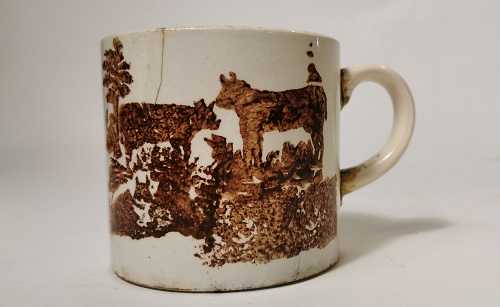
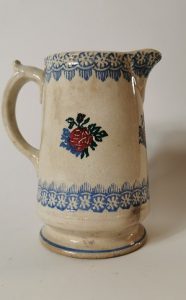
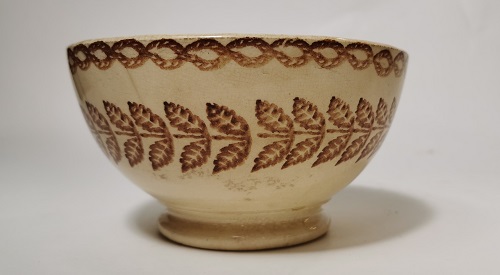
So what’s so special about these familiar elaborately decorated kitchen wares?
The pieces of spongeware we’ve got for auction on February 26th have been selected for this auction as, like the furniture they’ll sell alongside, they speak of another time, they tell stories of their use, passed down through generations of families, they are intricately decorated and, in defiance of usual antique rules, their value is swollen by their wear.
The origins of spongeware lie in the 1700s. Almost always done on earthenware (clay) items, it was easy and cheap to create. The technique itself involved using a cut sponge to delicately decorate the piece with colourful shapes, patterns and scenes.
But what makes it collectable?
Well for starters, spongeware is humble in its’ beginnings. It doesn’t pretend to be bone china. The collectability of spongeware lies less in its monetary value and more in its’ personality. Like vernacular furniture, the draw of spongeware is in the stories it has to tell and in its history. Because of the simplicity and affordability of the technique, many spongeware pieces were created at home as a hobby. They are oft found without any kind of artists mark or stamp which begs questions and nudges the mind to wander a few steps; “who did it?”, “why pigs?”, “what inspired this pattern?”. The questions likely will never be answered. Alas too much time has passed. But their mere presence in the mind of the beholder places a mystique and an air of curiosity on the piece.
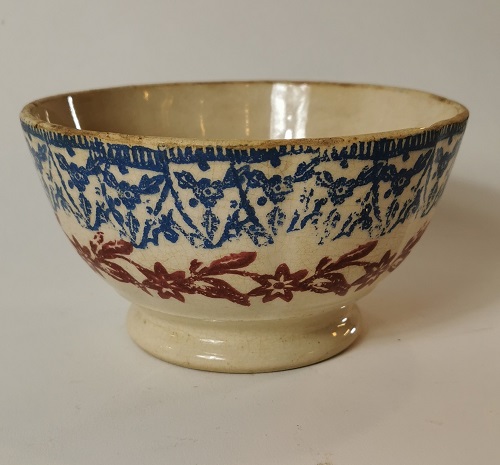
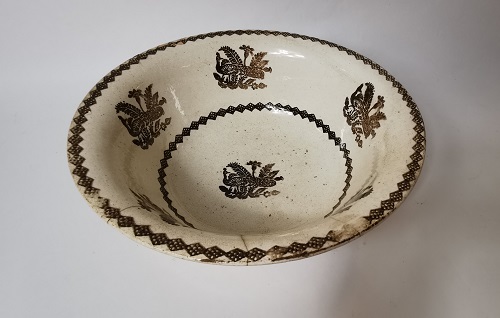
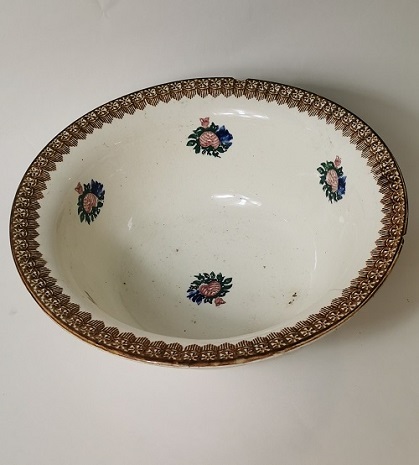
The popularity of creating spongeware pieces at home and the usability of the sponging technique meant that meant that the variety of colours and patterns that could be applied to the piece was virtually limitless. Collectors like that. Any avid collector will tell you of the adrenaline that comes with the discovery of a piece never before seen. Collecting thrives on exclusivity. Spongeware pieces are wholly done by hand. The human element means that no two pieces of spongeware will ever be identical. Spongeware patterns were copied, absolutely, but a shaky hand, a drip, a smudge or momentary oversaturation of paint on the sponge was impossible to replicate. Every piece of spongeware that remains in existence today is unique to itself and every piece bought is the first of its kind for its buyer.
Another offshoot benefit of the humble origins of the spongeware piece for the modern-day collector is that, in their day, their abundance and affordability meant that spongeware pieces were heavily used in the household. They were, simply put, the dishes. Ornate, yes. But they were functional too. Platters served meat and bowls steamed with porridge. They were stained, cracked, chipped and worn and, ultimately, subject to breakage. They were so intrinsic to everyday life in the rural Irish home that, as a result, few pieces survive today. And that, friends, makes them collectable and a half.
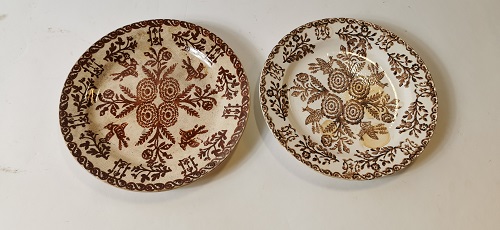
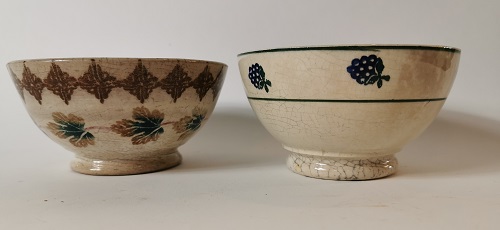
So, next time you’re visiting Granny, ask her. She might just have a world of stories to tell you about that old Willow pattern platter that you’ve been ignoring from you were a gawsun.
The Victor Mee Auctions Irish Country Interiors Sale will take place in our Cloverhill saleroom on February 27th at 5 pm.


